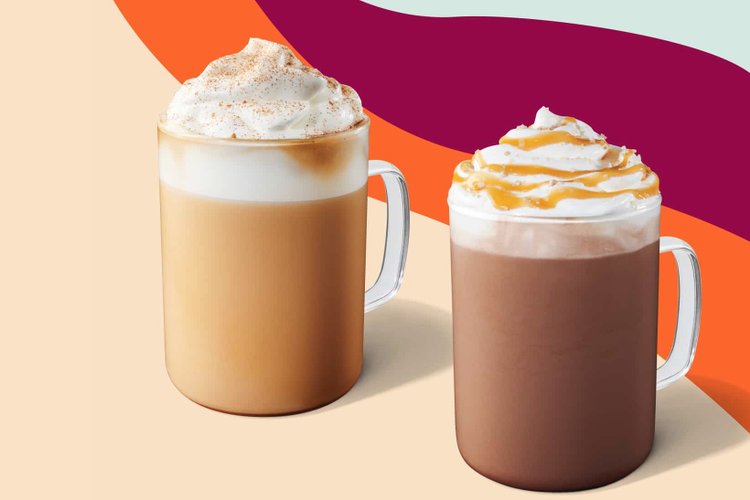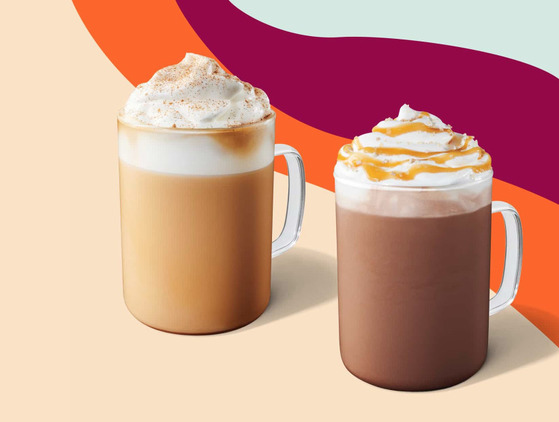Welcome to Thomas Insights — every day, we publish the latest news and analysis to keep our readers up to date on what’s happening in industry. Sign up here to get the day’s top stories delivered straight to your inbox.

Amongst the familiar fall rhythms of colorful foliage, sweater weather posts, apple picking, pumpkin patch visits, and Halloween movie marathons is the unofficial taste of the season: Starbucks’ signature fall drink, the pumpkin spice latte. Rooted in the rich earthy blend of pumpkin and coffee and punctuated with sharp aromatic notes of cinnamon, nutmeg, clove, allspice, and other spices, the pumpkin spice latte is a distinctive American indicator of autumn.
Introduced in 2003, the autumn coffee drink has many devoted fans. While the holiday season is brimming with fanciful flavors with their own merits — peppermint, eggnog, and gingerbread, to name a few — the pandemonium over pumpkin spice best demonstrates how seasonal trends and seasonality impact the supply chain.
Starbucks’ Stronghold on Pumpkin Spice
While certain flavors like apple cinnamon, maple, and pear are also quite popular this season, pumpkin spice has almost completely dominated the American autumnal palate. Its popularity is led, in part, by the Starbucks drink. Though there are other companies that sell products in a similar piquancy of pumpkin spice, Starbucks is perhaps one of the most well-known distributors of the flavor.
Despite it being a mainstay on the autumnal Starbucks menu, the drink continues to capture the fascination of the public and gain popularity year after year. In 2019, Starbucks said it sold 424 million pumpkin spice lattes in the United States. It once even cheekily announced the start of autumn was when their pumpkin spice lattes hit stores, just after Labor Day, around the time Nielsen reported consumers began searching for the drink in the late summer month of August.
The pumpkin spice latte is not only a sign of fall, it is a great motivator of sales for the chain. Forbes states purchasers of the pumpkin spice latte are more likely to have higher receipts than those who do not. To capture even greater sales, the coffee shop chain recently created a tea version of the drink to appeal to consumers who desired a decaffeinated version.
Clearly in high demand, the drink has irrefutably increased the craving for the spice and puree blend. In fact, according to a 2018 Forbes article, Starbucks’ pumpkin spice latte accounted for $110 million dollars of the total sales of pumpkin spice blend, dwarfing competitors like Dunkin Donuts and Tim Hortons. Even so, to match this rise in demand, there must be a synergetic relationship within the supply chain.
The Delicate Symbiosis Between Seasonal Trends and Supply Chains
To make seasonal trends work, the supply chain must be fully equipped to fulfill the call of the consumer. While this might sound like a cinch, there are a number of factors that impact the supply and the demand for such seasonal products. To best accommodate the clamor for the fall treat, agriculture, transport, and manufacturing sectors must be maintained to ensure optimal supply chain continuity.
Pumpkin production has grown in recent years to meet demand for the harvest-time sweet treats. Forbes reports production of the orange squash increased from 1.21 billion pounds in 2012 to 1.31 billion pounds in 2014. According to IBM, it takes nearly three months of 24-hour shifts in order to grow and harvest the fall squash behind the pumpkin spice craze.
Like most agricultural products, the supply of pumpkins can be affected by a number of disturbances or interruptions, like weather, crop failure, yield fluctuations, and waste. Interestingly, the drive for pumpkin spice also coincides with transportation’s peak season, a period from August to October, when the produce season is coming to an end and transportation volume is at the apex, prior to the holiday season.
Harvest Comfort in Uncomfortable Times
Though demand for many trends may be fickle, forecasting potential seasonal trends and product predictions could help to optimize the supply chain. The demand for pumpkin spice and all other holiday flavors are bolstered by year-round scarcity and limited-time-offer marketing. If demand holds, the drink should be as popular as it has been in previous years.
In years past, GrubHub data showed the three most popular months for pumpkin spice indulgence in the United States are the autumn months of October, November, and September, in that order. Even within the United States, there are states which consume more pumpkin spice than others, with states like California, Oregon, Washington, and Utah claiming the highest pumpkin spice purchases.
Right now, it looks as though consumers will continue to purchase harvest season delicacies, preserving the demand of the seasonal supply chain. Despite bleak times, pumpkin spice lattes still pepper autumn social media feeds, alongside fall foliage, a testament to the resilience of simple American comforts.
Image Credit: Courtesy of Starbucks


